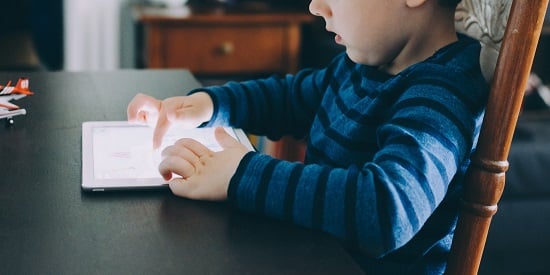The common household gadgets harvesting your child's data
Media release
Common household gadgets such as smart televisions and laptops are "flying under the radar" in parents' efforts to safeguard their children's privacy.
New Deakin University research shows everyday devices found in most Australian households pose the same security risk as the latest tech inventions, including voice-command intelligent home assistants such as Amazon Alexa – but attract less scrutiny.
Dr Luci Pangrazio, a researcher within Deakin's Research for Educational Impact (REDI) centre, led the Australian Research Council Centre of Excellence for the Digital Child study.
She said new technologies had muddied the waters on the household gadgets parents should be monitoring.
New-fangled baby monitors, schmick security systems, internet-connected toys and intelligent home assistants had copped heat in academic research and the media for their perceived data security risk.
But she said smart TVs, phones and web-connected gaming consoles were more commonplace in Australian homes, meaning they posed just as great a threat regarding the information they collected, stored and shared with third parties.
"The hype surrounding the digitisation of modern family households due to intelligent home assistants and other technologies has meant the privacy risks posed by more commonplace everyday items has been lost in the noise. This means smart TVs, phones and gaming consoles, which also harvest your data and are in almost every Australian home, are now flying under the radar," Dr Pangrazio said.
"Mapping the data-connections inside the home is a critical first step to understanding what devices families typically own and how our information is being collected, stored and shared. This allows us to formulate effective ways to protect our own and our children’s privacy."
The project team surveyed 504 Australian households with children aged 0-8 years to find what technologies they contained.
It found only 3 per cent of households had an internet connected toy such as a Furby or Hello Barbie, and less than a third of households with children aged one or under had a smart baby monitor. A quarter of all households surveyed owned a smart home assistant.
In contrast, most families had at least one smart television (85 per cent), and each household owned an average of 2.4 smartphones, one internet-connected gaming console, and more than one laptop, tablet or desktop computer.
Dr Pangrazio said the research was clear parents were worried about their family's privacy due to new technological developments. They also felt they had reasonable knowledge of the privacy risks, but many indicated they should know more.
"Our study showed parents generally feel concerned about the data privacy risks their family faces, with 27.9 per cent saying they are very concerned," Dr Pangrazio said.
"The top two worries people had was the potential for identity theft and the collection and selling of personal data.
"What this says to us is families are rightfully anxious about the datafication and commodification of their children's lives by tech companies. It also shows us we need to refocus our attention on the technologies that we actually do have inside our homes to more effectively manage the privacy risks."
Dr Luci Pangrazio's tips to safeguard privacy inside the home:
- When it comes to purchasing household goods and toys, consider whether it needs to connected to the internet. If not, consider, purchasing the 'dumb' model.
- Although terms and conditions documents are very long and complex, request a digital copy or look it up online and search for "personal data" or "data" to cut to what they are doing with your data.
- Check the default settings for your devices and goods in the home and make sure you are happy with the level of privacy offered.
- For mainstream digital platforms, use the website: Terms of Service; Didn't Read, to see how they are graded according to privacy.
- Remember you always have a choice; it might take a bit more effort but normally there is a different product or digital platform that offers better data privacy.
A link to the full report, Studying the Datafication of Australian childhoods: Learning from a survey of digital technologies in homes with young children, published in Media International Australia can be found here.

